Bruce Dowbiggin
When Russians Were Cool: How Detroit Brought Down The Wall
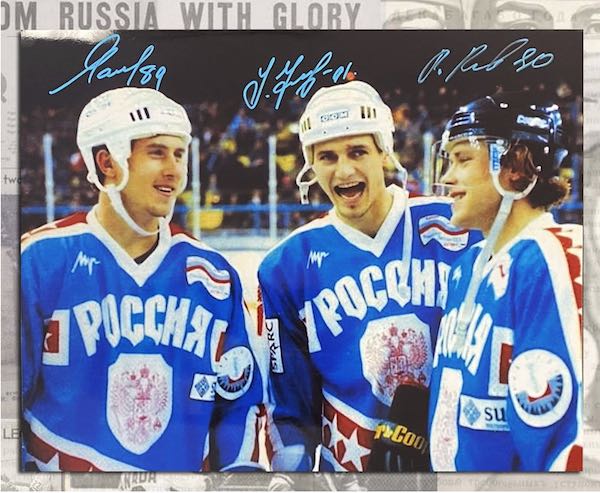
The Ukraine invasion has caused repercussions everywhere— even in hockey. The NHL, IIHF and the CHL have all responded in different ways to punish the aggression shown by Vladimir Putin. The CHL, in particular, has banned the drafting of Russians and Belorussians teenagers in this year’s bantam draft.
This overreach is all the rage with officials offended by Putin (the Metropolitan Opera fired one of its star soloists, Russian Anna Netrebko, for not condemning Putin enough). Not since the 1980s, when the dying USSR forbade the drifting on players into the NHL, has there been such distrust of Russians for political reasons.
In our new book Inexact Science, my son Evan and I recalled how the Detroit Red Wings, under chief scout Neil Smith, cracked the bias against Soviet (Russian) players in the historic 1989 draft as they poached a Hall of Fame defence man from Sweden and two Russian stars— Sergei Fedorov and Vladimir Konstantinov, in the middle rounds of that draft. And how it could have been much greater with a third Russian who got away.
“In 1986, Smith had been sent on a mission to find a full-time European scout for Detroit. Visiting Sweden, he encountered Christer Rockstrom. Smith was already somewhat acquainted with this scouting whiz, because Christer had been the cab driver who would take him to and from games he was scouting. Realizing he was dealing with a hardcore but perceptive fan who knew the players inside and out, Smith persuaded the Wings to give the Swede some scouting employment on a part-time basis, and then promoted him to the full-time European scout role a couple years after. It was a partnership that paid huge dividends.
The results of the organization’s new dedication to searching deeply into Europe was never more evident than with their third-rounder in the 1989 draft. That pick (number 53) may just be the best mid-round steal in NHL draft history. Rockstrom had put in tremendous diligence to find him, alerting his higher-ups to this thin, wiry kid playing for VIK Västerås HK of the Swedish Elitserien. A teenaged defenceman who had drawn into only 20 games in 1988–89 with just two assists to show for it, this player didn’t get much ice time when he actually did find his way into the lineup. Nonetheless, he happened to catch Rockstrom’s eye. That D-man was none other than Nicklas Lidstrom.
Fearing Lidstrom would be lost to them in the 1990 draft, when he’d be considered a first-round-worthy prospect, Detroit pounced a year in advance. Rockstrom convinced the Wings brass to use their last possible chance to grab Lidstrom—a potential gem who he believed would turn into a top pairing defender. Wary that someone could spill the beans to other teams, only four members of the organization—Devellano, Smith, Holland and Rockstrom—knew the secret until the day of his selection.
It worked like a charm. Lidstrom was still available come round three and was taken by the Wings—to the confusion of many in attendance. Even the NHL’s Central Scouting Bureau had very little info on what was considered quite an off-the-board choice (or “project,” as it’s often dubbed today).
As the league scrambled to figure out the Lidstrom pick on the draft floor in Minnesota, the Wings were thinking even further to the east for other delightful discoveries. Once the spring of 1989 rolled around, Soviet authorities had finally begun actively marketing some of their established stars to interested buyers in North America… it was still believed that the Soviets would want to hang on to their elite younger talent for several years to come. This mindset warded off many teams from wanting to “waste” a pick on such an arduous scenario. The Wings were not so easily scared in 1989. Having already passed on grabbing Sergei Fedorov when they had the chance in 1988, they used their fourth-round pick, number 74 overall, to select him the following year.
Devellano certainly wasn’t planning to miss out on Fedorov on this particular occasion. As he told NHL.com in 2015, “My thinking was, ‘Let’s call a spade a spade; how many fourth-round picks who are North American make it big?’ Very few… So what I said to myself was, ‘This is the best 19-year-old in the world, and I’m going to pass on him (again) to probably take a minor-league player?’ Forget about that, he’s coming on the Red Wings’ list, and we’ll worry about it in the future.” A star centre with Moscow CSKA, Fedorov internationally and domestically was featured as the playmaking, defensively responsible force on a line with fellow teenaged phenoms Alexander Mogilny and Pavel Bure—a ridiculously potent grouping that was the equivalent of a 2004 Russian squad icing a line with Evgeni Malkin between Alex Ovechkin and Ilya Kovalchuk.
Mogilny himself had been secured by the Sabres with the 89th overall pick a year earlier, but scouts were salivating that perhaps Bure or Fedorov could be available the next year as well. Fedorov had even been offered the chance to jump ship with Mogilny earlier. Before becoming the first Soviet player to successfully defect, Mogilny revealed his intentions to close friend Fedorov in a Stockholm hotel room they shared. Fedorov rejected the offer to join him, however, figuring it was a lark, prank or some sort of joke that was never supposed to be acted upon. But within 48 hours of the chat, Mogilny bolted the premises in an elaborate escape where he gained contact with the Sabres and the parties enacted a covert flight plan into the USA. While Fedorov stayed put for the meantime, the Wings were undeterred in taking him, even if it made the Soviet authorities keep even stricter surveillance on their prized pupils.
At his team’s drafting table that day (in 1989), Devellano reportedly promised Smith that they could go after at least one more Russian before the day was over. That next one ended up being Fedorov, who many whispered might just have been the best on that line because of his uncanny ability to handle the duties of a two-way centre while the explosive Mogilny and Bure were freed up to earn the glory of scoring most of the goals. Devellano would make his reasoning clear down the road by stating, “As was the case with Petr Klima, my strategy was simple. We would draft the best players, and if they happened to be behind the Iron Curtain, we would use our ownership resources to find a way to get them out.” Such boldness confirms the theory that quality ownership is perhaps the most important element in forging a perennially successful sports club.
Indeed, the Ilitches—who also own the Detroit Tigers—were the polar opposite of what Wings ownership had been under Bruce Norris. Their willingness to use their big dollars, trust their personnel and treat their employees with a degree of loyalty and compassion certainly gave the franchise some incredible mileage in their eventual reign as the model NHL organization from the mid-1990s to the early 2010s. The drafting wizardry of 1989 didn’t necessarily begin and end with the Wings, though. And it could’ve been even richer. While Wings personnel in later years claimed they were ready to grab Fedorov’s linemate Bure with their sixth-round pick and deal with any questions of his eligibility later, they never got the chance to add him. Another team’s plans got in the way.
Detroit’s management group had apparently mused about grabbing Bure in the fifth round after already having secured Fedorov. As Holland told the Toronto Star’s Bob McKenzie in 1995:
We (were) at the draft table and Christer tells Neil “Now we should take Bure”… Neil said he didn’t think Bure had played enough games to be eligible. So Neil goes and checks with (NHL vice-president) Gil Stein, and Stein tells Neil that Bure has only played seven games and it has to be eleven (sanctioned games) to be an eligible pick. Neil comes back and tells us that, and Christer says “No, that’s not right. He played eleven. I know he played eleven.” Neil goes back to Stein and tells him our European scout said Bure should be eligible.
Stein still said no. The NHL’s records showed just five games played in 1987–88—figures Rockstrom believed were erroneous. So Neil comes back to the table and it’s coming to our turn. We didn’t think Bure was eligible, so we took someone else (Shawn McCosh)… Finally, Neil said we were going to take Bure with our next pick no matter what and let the league settle the eligibility thing later. We were just about to pick him when the Canucks announced his name.

It was Canucks GM Pat Quinn who swooped in on Bure during that sixth round (overruling his second-in-command, Brian Burke, who at the time thought Bure was too small for the big leagues of North America). Thankfully for the Canucks, their head scout, Mike Penny, agreed with Rockstrom’s assertion that Bure had made the required number of appearances and convinced his boss to turn in the card with Bure’s name on it. With whispers that the Oilers were looking to nab him too, the Canucks stepped up to make “The Russian Rocket” their own at number 113, and did so only three spots ahead of where the Wings ultimately took Dallas Drake—perhaps Detroit’s most successful North American pick that year, but a far cry from a future Hall of Famer like Bure.
As consolation the Red Wing later nabbed Vladimir Konstantinov in the seventh round. To put the finishing touches on their 1997-98 Stanley Cups they added USSR stars Igor Larionov, Sacha Fetisov and Slava Kozlov. The NHL— and Don Cherry— was never the same after the triumph of the Russian Five
Bruce Dowbiggin @dowbboy is the editor of Not The Public Broadcaster (http://www.notthepublicbroadcaster.com). The best-selling author was nominated for the BBN Business Book award of 2020 for Personal Account with Tony Comper. A two-time winner of the Gemini Award as Canada’s top television sports broadcaster, he’s also a regular contributor to Sirius XM Canada Talks Ch. 167. His new book with his son Evan Inexact Science: The Six Most Compelling Draft Years In NHL History is now available on http://brucedowbigginbooks.ca/book-personalaccount.aspx
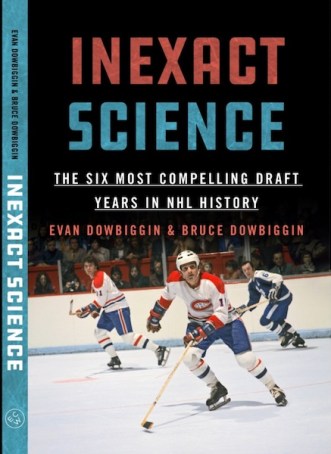
Bruce Dowbiggin
It Gets Late Early These Days: Time To Bounce Biden & Trudeau?
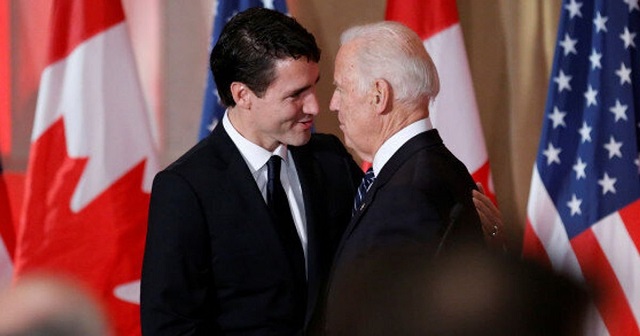
“Take out the papers and the trash, or you don’t get no spending cash.”
Whether you’re in the stock market or real estate the question of when to sell is paramount. When to dump a tanking investment or sell a house in a bad market is an art form. Hence the expression, Timing is everything.
For the incumbent governments in Canada and the U.S. the time has come to make that risky decision of when to fish or when to cut bait with their respective leaders.
In Canada the federal Liberals, still shacked up with the NDP in a common-law embrace, have been doing denial for an extended period since they used the Covid-19 lockdown to sneak out a minority government in 2021. As soon as voters awoke to the lockdown hoax they’d lived through— courtesy of Justin Trudeau— they began to abandon him as a marketable product.
With five years to procrastinate, however, they indulged their radical agenda of climate and culture rather than address how they might be re-elected with Trudeau and his Quebec-dominated cabinet. They blew black holes in Canada’s debt load. There was a PR strategy to label Pierre Poilievre as a mini-Trump. And to buy up the floundering legacy media sources before there 2025 vote.

But for the most part the Liberals still saw Happy Ways where the mainstream saw an intellectual lightweight tilting at every Woke windmill. Since 2021 the polls have shown a steady erosion to the point where they see a Conservative majority— maybe even super-majority— if an election were called today.
Now all governments get tired over time. The biggest complaint about Stephen Harper from the talking classes in 2015 was the sense of fatigue he projected to Canadians who want their PM to be a rock star. But the collapse in Trudeau’s support has come via other very serious underpinnings from corruption (Lavalin, ME Charity, Chinese influence) to entitlement (the Carbon Tax, deficit).
However you see these issues they have led to the point where Liberals, more than half of whom will lose in the next election, must decide if they want to go to Davy Jones locker on the HMCS Skippy. Many of them will qualify for federal pensions if they hold on to the bitter end with Trudeau in October of next year. So he has that assurance of support. But if he is punted by the party he resurrected in 2010, who will succeed him? The taint of Trudeau on his most loyal sycophants will disqualify anyone in cabinet from being taken seriously for the top job.
Outside the immediate junta, names like Mark Carney— former Bank of Canada head— and deposed justice minister Jody Wilson Raybould have been put forward. The problem for anyone aspiring to replace Trudeau is they will have to face his fanatical loyalists in the PMO who’ve slapped down any pretenders so far.
The most recent forlorn hope for Trudeau was that the Federal Budget might calm the waters. Running up the deficit to perilous numbers with a menu of profligate policies to slake the restless NDP was going to force Poilievre on the defensive. So were limp attacks such as this from Trudeau cabinet pal Marc Miller.
For a brief fortnight the polling seemed to stabilize. But now more recent polls show that Trudeau’s popularity bottom was not a bottom at all, just a transfer station en route to the Marianas Trench of politics. Leaving the question of who and when as the only measurables in the equation. How much runway does he deserves and how much his successor gets are the operative problems when Liberals spend the summer in their ridings.
Meanwhile Joe Biden’s faint hope of putting his opponent in jail before the November election has done nothing to move his polling. If anything the prosecution of Donald Trump as he runs against Biden in 2024 is seen as a distinctly underhanded tactic by many outside the MSNBC mouth breathers.
While polls are a mugs’ game, the news that Biden trails Trump in all seven of the swing states he needs to be re-elected has sent shock through Team Obama, which runs the Democratic Party at the moment. There are a lot of sinecures and cushy salaries at risk here. The addition of Robert Kennedy Jr. to the presidential ballot in key states like California is further diluting the DEMs base. While RFK Jr. draws from both parties it’s expected he’ll hurt Biden most.
As if that wasn’t enough the recent pro-Palestine occupations by students and paid agitators is seen as a referendum on Biden’s support for Israel among the fanatical left-wing base of the DEMs. And polls indicate the effect has been disastrous.

Unlike the Liberals who have time to effect a palace coup, the DEMs are up against the clock with their convention coming in July. While he still plays to the Hollywood and Wall Street donors, the general public sees Biden getting more decrepit by the day. His persona as a pleasantly dazed crossing guard has worn thin.
While replacement scenarios have dogged Biden since his election (saved only by the utter dislike for his VP Kamala Harris) the party pros are talking about one last pierce of theatre: letting Biden take the nomination in July, replace Harris with a star candidate like Michelle Obama or Tom Hanks and have Biden then take a knee for health reasons.
Let the untainted replacement take on Trump, who produces a puke-in-your-mouth reaction with half the American electorate. A squishy Obama/ Bill Clinton replacement could rout Trump in a debate and bring single white women and blacks/ latinos back home to the DEMs. Seems like a longshot?
This is the party that orchestrated at least four separate legal assaults on Trump, coincidentally in the year of the election. Don’t under-estimate their chicanery. And while they didn’t pay off the media as Trudeau has done, they don’t need to. They get the love for free.
Give them credit if they do, because doing nothing is a ticket to four years of The Don.
Bruce Dowbiggin @dowbboy is the editor of Not The Public Broadcaster A two-time winner of the Gemini Award as Canada’s top television sports broadcaster, he’s a regular contributor to Sirius XM Canada Talks Ch. 167. Now for pre-order, new from the team of Evan & Bruce Dowbiggin . Deal With It: The Trades That Stunned The NHL & Changed Hockey. From Espo to Boston in 1967 to Gretz in L.A. in 1988 to Patrick Roy leaving Montreal in 1995, the stories behind the story. Launching in paperback and Kindle on #Amazon this week. Destined to be a hockey best seller. https://www.amazon.ca/Deal-Trades-Stunned-Changed-Hockey-ebook/dp/B0D236NB35/
Bruce Dowbiggin
In Toronto The Leafs Always Fall In Spring: 2024 Edition
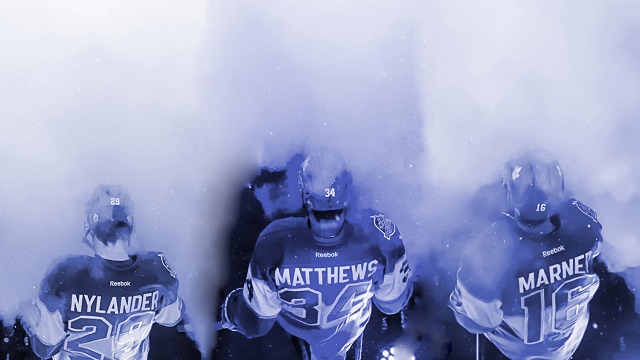
Who knew when we tuned in Saturday night to Hockey Night In Canada that we would be witnessing playoff history. Nay, not just playoff history but hockey history. According to what we saw and heard on HNIC just ONE TEAM played on Saturday. And they lost. It goes without saying that the team was HNIC’s beloved Toronto Maple Leafs.
Those of us who’d stuck with the telecast all evening could’ve sworn there was another team on the ice in black and gold. Rumour has it they were the Boston Bruins, but don’t quote us on that. Also, take it as a rumour that Boston’s 3-1 win gave them a 3-1 lead in games over Toronto heading back to Boston for what most expect will be the coup de grace for the blue and white. Again.
But when time came to discuss the game afterward the Toronto-based panel told us that the Leafs had beaten themselves. Yes, in some hockey version of metaphysics Toronto had transcended the third dimension. The Bruins were like The Fugitive, lurking far out of sight. Brad Marchand had had nothing to do with breaking up Toronto’s neutral-zone speed nor Charlie McAvoy clearing the front of their net. Jeremy Swayman, who he?

Instead the talking heads dissected the loss in shades of blue.
For those who were washing their hair or another vital task on Saturday, the Leafs had more story lines than a season of Curb Your Enthusiasm (insert your joke here), They finally got their migraine-afflicted star William Nylander back in the fold before a delirious Scotiabank crowd who’d probably paid about a $1000 a ticket to attend. But their star sniper Auston Matthews (allegedly) had food poisoning or a gall stone or a tee time next week back home in Scottsdale. Hard to say.
There was also a goaltending controversy, a Mitch Marner controversy and a Keith Pelley controversy (more on MLSE’s new CEO in a moment). And the, you know, 1967 thing. Despite the hysteria of their long-suffering fans at puck drop, postgame analysts hinted the Leafs seemed to be disinterested. Or, to those who actually watched the game, they were schooled by a better Boston team.
By the middle of the second period, despond and a 3-0 deficit had settled on the Leafs. Despite being the ONLY TEAM on the ice their well-compensated stars were bitching at each other on the bench. While Matthews looked glumly at his pals, Marner had a hissy fit throwing his gloves to the floor. Nylander lip-synched a rebuke to Marner along the lines of Grow up, this ain’t junior hockey. Did we say the crowd booed them off the ice after the second period? Yeah, that too.

Which led mild-mannered Kelly Hrudey to scold Marner for a bush-league behaviour in the break. Remember, Hrudey’s the nice guy on the HNIC panel. Where others see an alligator chomping on their leg Kelly sees a chance to get up-close with nature. So the rebuke for Marner was incendiary. By the time they dropped the pick for the third period you’d have thought Bob Cole wasn’t the only person to pass away this week. Gloom.
Making matters worse, Matthews was nowhere to be found. (According coach Keefe, the doctors had pulled him from the game. Whatever.) When the contest ended with a Toronto loss, the postgame chatter was once more obsessed with Toronto’s failings, as if another team were not having its way on the ice. Where was the effort? Where was the intensity promised when Leafs management spread dollars like Easter candy among its Core Four?
Kevin Bieksa, typically the most salty one on the panel, reminded everyone there was a Game 5 Monday and that 3-1 leads have been overcome. But with Toronto’s success in comebacks being nil he sounded like a guy trying to sell you a penny mining stock.
The dressing-room afterward was mint. “You know what, that’s just the way we are,” Nylander said. “I mean we expect a lot from each other, and we love each other.”
“I don’t think there’s any (frustration),” Marner added unconvincingly. “We’re grown men. We were talking about plays out there that we just want to make sure we’re all 100 percent on and know what we’re doing… We’re not yelling at each other because we hate each other.”
Chris Johnston of The Athletic called it the end of the Maple Leafs as we know them. “They’re making more mistakes at five-on-five, they’re soundly losing the special-teams battle, and they’ve transformed from being one of the NHL’s best offensive teams in the regular season to one that can’t score more than two goals per night in the playoffs. Wash, rinse, repeat.”
Coach Sheldon Keefe, whose shelf life has about 60 minutes left, was enigmatic in the face of cruel destiny. “You can question a lot of things; you can’t question the effort,” he said.
He’s right about one thing. When this first-round ends in ignominy there will be plenty of questions from Pelley, newly installed at the top of the MLSE pyramid. Such as, why should I keep this management team that teases Waygu beef in-season but delivers ground chuck in the playoffs? It’s long been said that the league the Leafs have been built for doesn’t exist in the postseason. So why keep pretending it does?
For those not in the know, Pelley has spent the last few years dealing with the Saudi’s LIV golf enterprise in his role as CEO of what used to be known as the European Tour. (Insert your barbarism reference) So he’s used to dealing with nasty situations.
Maybe his first act on the Leafs file is reminding everyone that two teams play each other in the playoffs, and it might be a good idea to learn from what the winners are doing.
Bruce Dowbiggin @dowbboy is the editor of Not The Public Broadcaster A two-time winner of the Gemini Award as Canada’s top television sports broadcaster, he’s a regular contributor to Sirius XM Canada Talks Ch. 167. Now for pre-order, new from the team of Evan & Bruce Dowbiggin . Deal With It: The Trades That Stunned The NHL & Changed Hockey. From Espo to Boston in 1967 to Gretz in L.A. in 1988 to Patrick Roy leaving Montreal in 1995, the stories behind the story. Launching in paperback and Kindle on #Amazon this week. Destined to be a hockey best seller. https://www.amazon.ca/Deal-Trades-Stunned-Changed-Hockey-ebook/dp/B0D236NB35/
-

 Business2 days ago
Business2 days agoUN plastics plans are unscientific and unrealistic
-
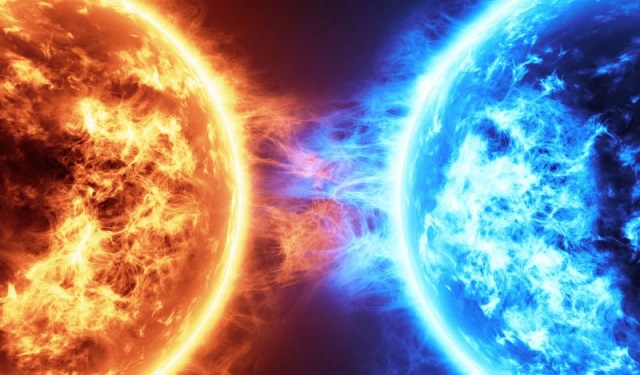
 Brownstone Institute2 days ago
Brownstone Institute2 days agoThe Teams Are Set for World War III
-

 Education2 days ago
Education2 days agoSupport a young reader through the Tim Hortons Smile Cookie campaign
-

 Alberta1 day ago
Alberta1 day agoAlberta threatens to fight Trudeau government restrictions on Canada’s plastics industry
-

 Automotive1 day ago
Automotive1 day agoCanadian interest in electric vehicles falls for second year in a row: survey
-
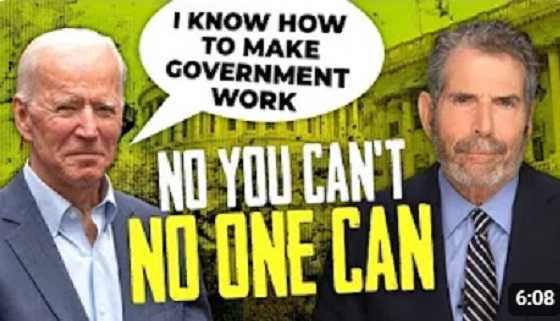
 John Stossel19 hours ago
John Stossel19 hours agoWhy Biden’s Just Wrong: NO ONE “Knows How to Make Government Work.”
-

 Business22 hours ago
Business22 hours agoWEF panelist suggests COVID response accustomed people to the idea of CBDCs
-
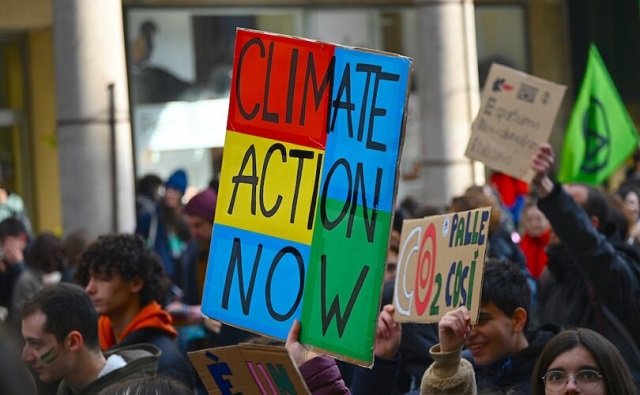
 Opinion2 days ago
Opinion2 days agoThe Climate-Alarmist Movement Has A Big PR Problem On Its Hands


